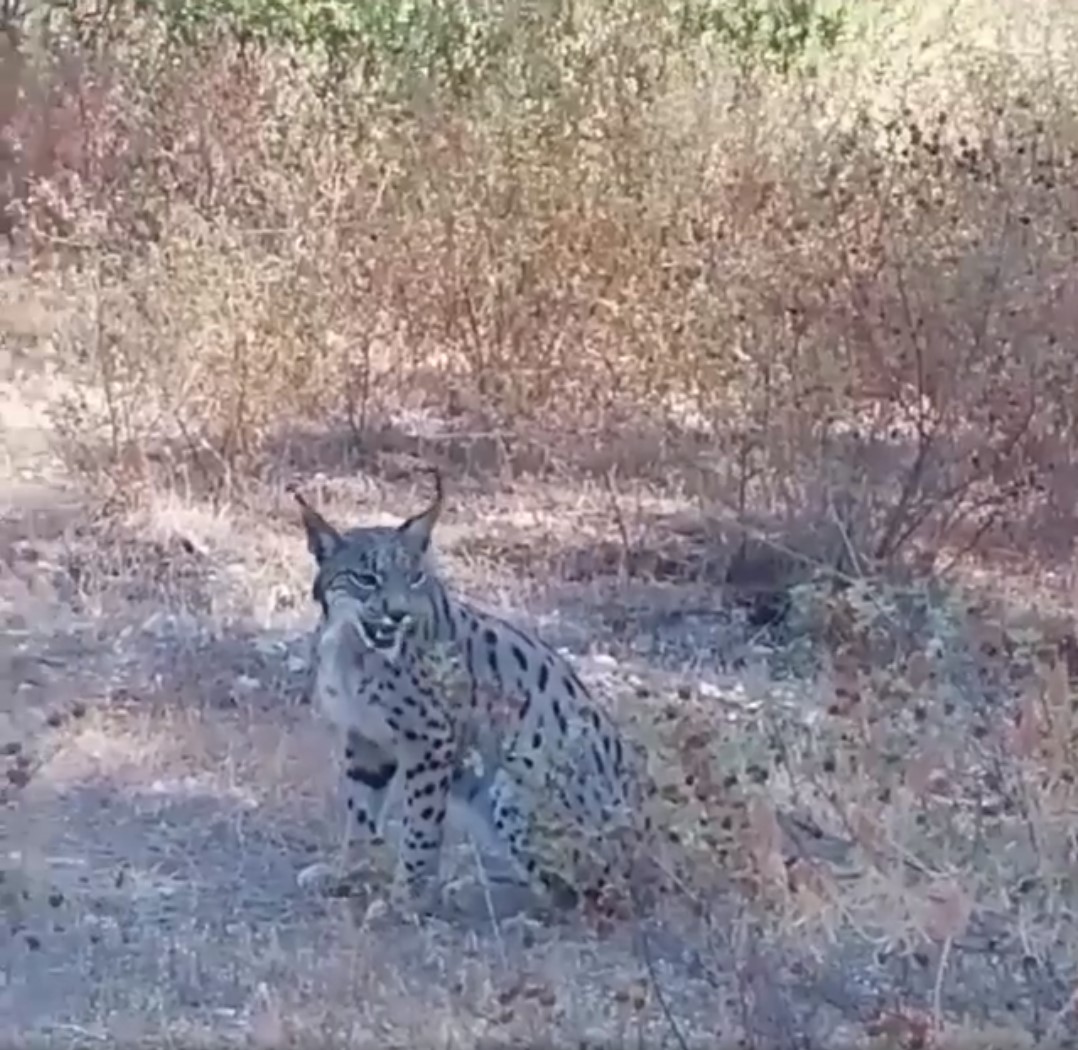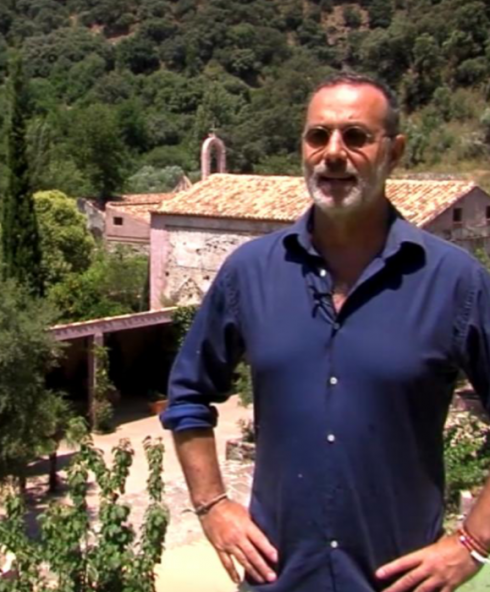THE ‘experts’ at the Junta de Andalucia remain unconvinced but for one man there is no doubt. After 60 years of absence, the endangered Iberian Lynx has made a comeback in the Serrania de Ronda.
Enrique Ruiz knows the Valle del Genal like the back of his hand. He has spent the last 20 years in the valley, painstakingly restoring its 18th century Fabrica de Hojalata tin factory and becoming intimately acquainted with the surrounding countryside.
Then one day in late June, Manfred, a German guest who was staying at the secluded factory-turned vineyard, returned from a long trek with a surprising – and extremely exciting – video.

He showed it to 58-year-old Ruiz – a retired World Bank economist – thinking that the creature he had captured on his mobile phone, a large cat, must be common in the area.
Enrique immediately told him it most certainly was not – it was a highly endangered Iberian lynx. The last official sighting of one in the Serrania de Ronda – the mountains and hills that surround the eponymous Spanish mountain town – was only just within living memory.
For more than 60 years it has been the missing lynx, vanished from the wooded hills and valleys of Andalucia’s wild interior, just 90 minutes drive from Marbella.
“There is no doubt it is a lynx,” Ruiz tells me. “It is quite possible that the coronavirus lockdown has encouraged the cat to roam further. With no traffic and fewer people around, lots of wildlife has been making its way into places they are not normally seen.”
And it makes sense to Ruiz for lynx to reappear in the area after such a long time.
“There may not be any rabbits around here, but there is plenty for them to eat – rats and snakes for example,” he says.
“And the flow of lynx is from the south to the north as they reclaim their old ranges – they have been moving into northern Spain from Portugal, and I think the same may be happening here.”
Not everyone is convinced by the video. Experts from the Junta de Andalucia have pooh-poohed the whole idea, saying that the vegetation filmed in the clip is not typical of the area.

They say it is much more likely to have been filmed in Sevilla or Huelva.
But Ruiz stands by his story and is firm in his conviction that Manfred was not making things up: “He had gone for a long hike in the hills for four or five hours. When he got back he said ‘look what I have here’ and showed me the clip. He had no idea that there are supposed to be no lynxes around here’.”
And Ruiz is backed up by commentators on the Fabrica de Hojalata Facebook page, several of whom have also reported sightings and tell-tale tracks.
He is also supported by an ecologist Javier Dominguez, from Malaga, who studied wildlife corridors around the Ronda area for six months some years ago.
The wildlife expert told the Olive Press how he had talked to over 60 landowners and farmers in the Serrania to understand what sort of animals and birds inhabited the protected area.
His work had been commissioned, in part, to prevent a toll motorway from being introduced through the Genal Valley from the Costa del Sol to Ronda.
“I spent six months going through the area’s urbanism plans, to see how this motorway would affect the local area.
“Quite a few farmers said they had seen lynxes and German winemaker Federico Schatz had part of his vineyard over a regular lynx path.
“I think my work helped in part to stop the project of build a road between San Pedro de Alcántara and Ronda.
“One biologist also found droppings but I don’t know if they live in the Serrania or they come in from other areas to feed and hunt?”

Either way, the professionals are taking the video a little more seriously than the Junta.
An expert from the Donana National Park is due any day to check out the area for lynx spores.
Once on the endangered list, Spain’s native Iberian lynx population is now starting to thrive.
The species has roared back from a depressing low of 94 individuals in 2004 to 461 in Andalucia in 2019.
There has been a 3.6% increase in the past year alone, with the Sierra Morena area of Jaen (Guadalmellato, Cardeña, Andujar and Guarrizas) as the species’ main territory with 356 cats in the wild.
Further colonies are found in Donana National Park, Huelva, with confirmed sightings also in Sevilla province.
This spring, Donana’s captive breeding programme celebrated the birth of 17 lynx kittens which will begin their introduction to the wild right about now.
Click here to read more Spain News from The Olive Press.








